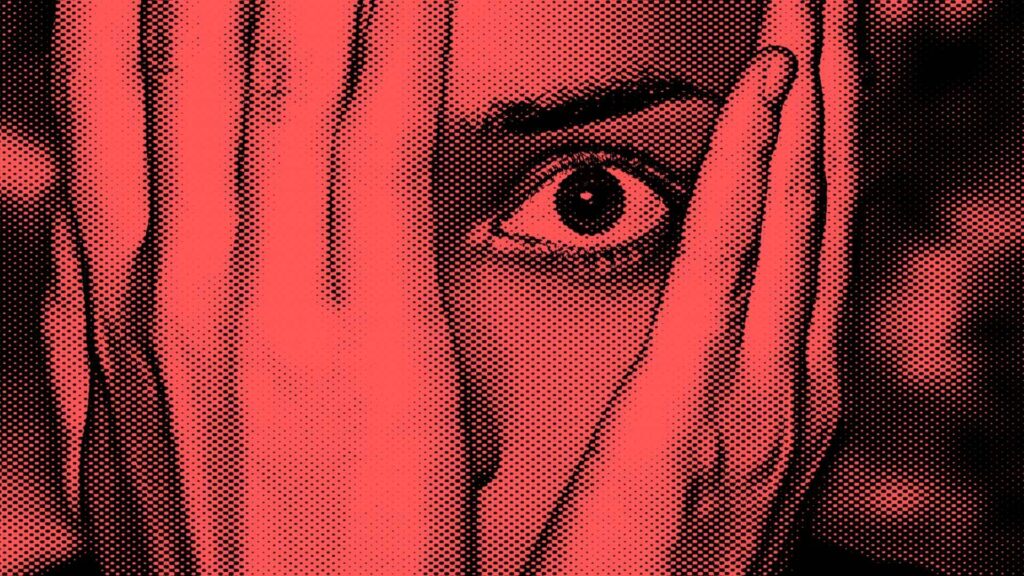The Difference Between Phobia and Fear: How to Tell Them Apart

Understanding the Nature of Phobias

Phobias are more than just simple fears. They are intense and irrational anxieties that can significantly disrupt a person’s daily life and well-being. Understanding the nature of phobias is crucial in order to address and manage these overwhelming fears effectively.
Phobias can arise from a variety of factors, including traumatic experiences, learned behaviors, or genetic predispositions. While the specific causes of phobias may vary from person to person, all phobias share a common feature: an excessive and persistent fear response to a particular object, situation, or activity. This fear response often leads to a strong desire to avoid the trigger at all costs, which can limit one’s daily activities and social interactions.
It is important to recognize that phobias are not simply a matter of willpower or weakness; they are real and legitimate mental health conditions. With the right understanding and support, individuals with phobias can learn to overcome their anxieties and lead fulfilling lives. In the following sections, we will delve deeper into the characteristics of fear, examine the psychological roots of phobias, and explore effective strategies for managing and overcoming phobias.
Recognizing the Characteristics of Fear

Fear is an innate and universal emotion experienced by individuals across cultures and ages. It is a normal response to potential threat or danger, and serves as a protective mechanism that prompts us to take necessary action. Recognizing the characteristics of fear is crucial in understanding how it affects our thoughts, feelings, and behaviors.
One of the key characteristics of fear is the activation of our body’s fight-or-flight response. When faced with a perceived threat, the amygdala, a small almond-shaped structure in the brain, signals the release of stress hormones such as adrenaline and cortisol. This leads to a cascade of physiological changes, including increased heart rate, rapid breathing, heightened senses, and muscle tension. These bodily reactions prepare us for immediate action, whether it be confronting the threat or escaping from it. By recognizing these physical symptoms, we can gain insight into the presence of fear and its potential impact on our overall well-being.
Additionally, fear often gives rise to a cognitive and emotional response. We may experience a sense of dread, anxiety, or unease, and our thoughts may become more focused on potential negative outcomes or worst-case scenarios. This heightened state of alertness can lead to a narrowing of attention, making it difficult to concentrate on other tasks or think clearly. Furthermore, fear can influence our behavior, causing us to avoid certain situations or stimuli that we associate with the perceived threat. Recognizing these cognitive and behavioral patterns can help us identify and address our fears, allowing us to navigate through life with a greater sense of control and resilience.
In the next section, we will delve deeper into the psychological roots of phobias, offering a more comprehensive understanding of the development and maintenance of these intense and irrational fears. By unraveling the underlying causes of fear, we can shed light on why some individuals may be more susceptible to specific phobias, and explore potential avenues for effective treatment and management.
Examining the Psychological Roots of Phobias

Phobias are deeply rooted in our psychological makeup, and understanding their origins is essential for effective treatment and management. At the heart of this complex issue lies the intricate interplay between our thoughts, emotions, and experiences. While the specific causes of phobias can vary from person to person, several psychological factors have been identified as potential contributors.
One such factor is the theory of classical conditioning, which suggests that phobias can be acquired through the process of association. For instance, if a person experiences a traumatic event or intense fear in the presence of a specific object or situation, they may develop a phobia towards it. This association between fear and the triggering stimuli becomes deeply ingrained in their psyche, leading to an automatic fear response even when faced with a harmless or non-threatening stimulus.
Additionally, experiences and learned behaviors can also play a significant role in the development of phobias. Observational learning, where an individual acquires a phobia by witnessing someone else’s fear response, can contribute to the formation of phobias. For example, a child may develop a fear of spiders if they see a parent or sibling displaying an extreme fear response towards them. This process highlights the influence of social learning and the power of modeling in shaping our fears and anxieties.
Studying the psychological roots of phobias allows us to gain a deeper understanding of why certain fears persist and the intricate mechanisms that contribute to their development. By unraveling these complex psychological factors, we can pave the way for more targeted and effective interventions to alleviate the distress caused by phobias.
Unveiling the Underlying Causes of Fear
Fear is a powerful and instinctual emotion that can have a profound impact on our lives. It is a natural response to danger or threat, helping us to survive and protect ourselves. But what are the underlying causes of fear? What triggers this intense emotional response?
One of the primary causes of fear is a traumatic experience. When we go through a traumatic event, our brain registers it as a threat and stores the memory for future reference. This memory can then be triggered by similar circumstances or stimuli, leading to a fear response. For example, someone who has been bitten by a dog may develop a fear of dogs, as their brain associates dogs with danger.
Another cause of fear is learned behavior. We often learn to be afraid of certain things from our environment, such as our parents or peers. This can be seen in the case of phobias, which are extreme and irrational fears of specific objects or situations. For instance, a person with arachnophobia may have learned to fear spiders after witnessing a parent’s fearful reaction to them.
Understanding the underlying causes of fear is essential in addressing and managing our fears. By identifying the root cause, we can begin to challenge and reframe our fears, ultimately leading to a fear-free life. In the following section, we will delve deeper into the intricacies of fear and explore effective strategies for managing and overcoming phobias.”
Differentiating Phobias and Fear: A Definition
Phobias and fear are often used interchangeably, but it is important to understand that they are distinct concepts. While fear is a natural response to a perceived threat, phobias are deep-seated and irrational fears that can significantly impact a person’s daily life. Fear, on the other hand, is a temporary emotional response to a specific stimulus.
Phobias are characterized by their intensity and persistence. Unlike fear, which typically subsides once the threat is removed or resolved, phobias can linger for months or even years. Individuals with phobias may go to great lengths to avoid situations or objects that trigger their fear, which can hinder their ability to engage in normal activities and impact their overall well-being.
It is essential to differentiate between these two constructs, as understanding the nature of phobias can inform treatment approaches. While fear is a rational response to a perceived threat, phobias are rooted in irrational and exaggerated fears. This distinction allows for targeted interventions and strategies to help individuals overcome the debilitating effects of phobias and regain control of their lives. By clarifying this definition, we can lay the foundation for a more comprehensive exploration of phobias and fear and their impact on mental health.
Certainly! Here’s information differentiating phobias and fear, presented in a table format:
| Differentiating Phobias and Fear: A Definition | Key Aspects | Implications and Considerations |
|---|---|---|
| Fear | – Definition: Fear is a natural emotional response to a perceived threat or danger. | – Implications: An adaptive mechanism that prompts protective behaviors in response to real or perceived threats. |
| – Nature: Fear is a common and universal experience in humans and animals. | – Considerations: Can be a temporary emotional state triggered by specific situations or stimuli. | |
| Phobia | – Definition: A phobia is an intense, persistent, and irrational fear of a specific object, situation, or activity. | – Implications: Extends beyond normal fear, often leading to avoidance behaviors and significant distress. |
| – Criteria: Diagnosed based on specific criteria, including duration, intensity, and impairment in daily functioning. | – Considerations: Phobias can interfere with daily life and may require therapeutic intervention. | |
| Normal Fear Response | – Triggered by: Immediate or realistic threats and dangers. | – Implications: Serves a protective function, prompting appropriate reactions for survival. |
| – Duration: Typically subsides once the threat is no longer present. | – Considerations: Part of the body’s natural fight-or-flight response. | |
| Phobic Fear Response | – Triggered by: Often irrational or exaggerated stimuli or situations. | – Implications: Persistent and disproportionate fear leading to avoidance behaviors. |
| – Duration: Persists over an extended period, impacting daily life. | – Considerations: May not have a clear or immediate threat, yet elicits intense fear. | |
| Commonality | – Frequency: Fear is a normal and common human experience. | – Implications: Adaptive and essential for survival in response to genuine threats. |
| – Prevalence: Phobias are less common but can significantly impact individuals who experience them. | – Considerations: Phobias may require specialized treatment and intervention. | |
| Adaptive Function of Fear | – Survival: Fear prompts appropriate responses for immediate danger. | – Implications: Contributes to the preservation of life and well-being. |
| – Learning: Helps individuals learn to avoid potentially harmful situations. | – Considerations: Facilitates the acquisition of knowledge about threats. | |
| Impairment and Distress | – Fear: Generally does not lead to significant impairment or distress. | – Implications: A temporary emotional state that does not interfere with daily functioning. |
| – Phobia: Results in notable impairment, avoidance, and distress. | – Considerations: Phobias often require intervention due to their impact on well-being. | |
| Treatment Approach | – Fear: Typically managed through coping strategies and exposure therapy. | – Implications: Education and understanding may be sufficient for normal fear. |
| – Phobia: Often requires therapeutic approaches, including cognitive-behavioral therapy (CBT) and exposure therapy. | – Considerations: Professional intervention may be essential for addressing phobias. |
Exploring the Emotional Responses to Phobias
Phobias can elicit a wide range of emotional responses, often leaving individuals feeling overwhelmed and helpless. The intense fear and anxiety associated with phobias can trigger a cascade of emotions, impacting not only one’s mental well-being but also their overall quality of life. People with phobias may experience a constant sense of dread, anticipating encounters with the object or situation that provokes their phobia. This heightened emotional state can lead to irritability, restlessness, and a constant state of hyper-vigilance. The fear of potentially encountering the source of their phobia can consume their thoughts, causing them to avoid certain places, activities, or even people. These avoidance behaviors can be isolating, leading to feelings of sadness, loneliness, and a sense of being disconnected from the world around them.
Moreover, the emotional responses to phobias are not limited to fear and anxiety alone. Phobias can also give rise to feelings of embarrassment, shame, and guilt, as individuals may struggle to understand why they are fearful of seemingly harmless objects or situations. These emotions can be particularly challenging to navigate, often leading to self-criticism and a negative self-image. It is important to recognize that phobias are not a choice or a sign of weakness; they are a legitimate and common psychological condition that affects millions of people worldwide. By understanding the emotional responses associated with phobias, we can provide much-needed support, empathy, and resources to those who are battling these overwhelming fears.
Examining How Fear Manifests in Daily Life
Fear is a complex emotion that can manifest in various ways in our daily lives. It may result in avoidance behavior, causing individuals to go to great lengths to steer clear of the object or situation that triggers fear. For example, someone with a fear of flying may choose to drive long distances instead of boarding a plane, despite the inconvenience it may cause. Such avoidance strategies can significantly impact one’s quality of life, limiting their experiences and opportunities for personal growth.
Furthermore, fear can also have a detrimental effect on our physical health. Chronic fear and anxiety activate the body’s stress response, leading to a cascade of physiological changes. These can include increased heart rate, elevated blood pressure, and heightened muscle tension. Prolonged exposure to fear-inducing stimuli can thus contribute to the development of chronic health conditions, such as cardiovascular disease, digestive disorders, and even weakened immune function. Understanding how fear manifests in daily life is crucial for identifying its impact and finding effective ways to manage and overcome it. By recognizing and addressing the various manifestations of fear, individuals can take proactive steps towards leading a fear-free life that is filled with possibilities.
Analyzing the Physical Symptoms of Phobias
Phobias, considered to be anxiety disorders, can have profound effects on an individual’s physical well-being. When faced with a specific phobia-triggering stimulus, the body initiates a cascade of physiological responses that can be overwhelming. One common physical symptom experienced by individuals with phobias is an accelerated heart rate, commonly known as tachycardia. This rapid heartbeat is often accompanied by increased blood pressure, as the body prepares for a fight-or-flight response.
The physical manifestations of phobias extend beyond cardiovascular symptoms. Individuals may also experience profuse sweating, known as diaphoresis, due to the activation of the sweat glands triggered by the body’s stress response system. This excessive sweating can be extremely distressing, and individuals may find themselves feeling self-conscious or embarrassed in social situations. Additionally, trembling or shaking may occur, even without conscious control, further emphasizing the debilitating nature of phobias. These physical symptoms not only impact an individual’s overall quality of life but can also lead to avoidance behaviors, which can exacerbate the phobia and perpetuate the cycle of fear.
Identifying Common Triggers for Phobias
Phobias can be triggered by a wide range of stimuli, and it is important to recognize these common triggers in order to better understand and manage these debilitating fears. One common trigger for phobias is traumatic experiences. When an individual goes through a particularly distressing or frightening event, it can result in the development of a specific phobia associated with that experience. For example, someone who was trapped in an elevator during a power outage may develop a fear of enclosed spaces, known as claustrophobia. Additionally, witnessing or hearing about a traumatic event can also lead to the development of a phobia, as the individual associates the trigger with fear and danger.
Another common trigger for phobias is learned behavior. Individuals are susceptible to developing phobias if they observe others exhibiting strong fear or anxiety in relation to a specific stimulus. This phenomenon, known as vicarious conditioning, can occur during childhood when children look to adults as role models and learn from their reactions to various situations. For example, if a child witnesses their parent displaying a severe fear of heights, they may learn to associate heights with danger and develop a phobia called acrophobia. The process of classical conditioning, in which a neutral stimulus becomes associated with a negative response, can also contribute to the development of phobias. For instance, if an individual experiences a panic attack while in an airplane, they might associate the airplane with fear and subsequently develop a flying phobia, known as aviophobia.
Unraveling the Relationship Between Phobias and Anxiety
Phobias and anxiety are often intertwined, with one frequently leading to the other. While fear and anxiety are normal human emotions, they can become heightened and persistent, resulting in debilitating phobias. Understanding the relationship between these two conditions is crucial in order to effectively address them.
Phobias are specific fears that are irrational and excessive. They are characterized by intense feelings of fear or panic in response to a specific object, situation, or activity. On the other hand, anxiety is a broader term that encompasses excessive worry or fear about a variety of things, often without a specific trigger. Phobias can be seen as a subset of anxiety disorders, as they are a specific type of anxiety focused on a particular fear.
Research suggests that phobias and anxiety disorders share common underlying factors, such as genetic predisposition and certain brain mechanisms. Studies have shown that individuals with family members who suffer from anxiety or phobias are more likely to develop these conditions themselves. Additionally, there may be certain brain regions and neurotransmitters that play a role in the development and maintenance of both phobias and anxiety disorders.
Stay tuned for the next section where we will delve deeper into the impact of phobias and anxiety on mental health and discuss effective strategies for managing these conditions. Understanding the intricacies of these disorders will empower individuals to seek appropriate help and ultimately lead to a fear-free life.
Assessing the Impact of Fear on Mental Health
The impact of fear on mental health is a topic of great significance, as it delves into the intricate relationship between our emotions and well-being. Fear, as a powerful and primal response, can have profound effects on our mental state, leading to various psychological challenges. When fear becomes pervasive and overwhelming, it can contribute to the development or exacerbation of mental health disorders such as anxiety and depression.
Studies have shown that prolonged exposure to fear and chronic feelings of anxiety can disrupt our brain’s neurochemistry and impair cognitive function. The constant activation of the body’s stress response system, triggered by fear, can lead to an imbalance of hormones such as cortisol, which plays a critical role in regulating our mood and stress levels. This hormonal imbalance can contribute to the manifestation of anxiety symptoms, including persistent worry, restlessness, and panic attacks.
Furthermore, the impact of fear on mental health extends beyond the physiological realm and can affect our behavior and interpersonal relationships. Fear can instill a sense of avoidance, leading individuals to withdraw from social activities or isolate themselves from others. This withdrawal not only deprives individuals of social support but also reinforces feelings of loneliness, further contributing to the deterioration of mental well-being.
Understanding the complex impact of fear on mental health requires a comprehensive approach that combines psychoeducation, therapeutic interventions, and support networks. By addressing the underlying causes of fear and developing effective coping strategies, individuals can navigate their fears and improve their mental resilience. In the next section, we will explore various strategies for managing phobias and fears, empowering individuals to lead fear-free lives.
Understanding the Role of Conditioning in Phobias
Conditioning plays a significant role in the development of phobias. Through the process of classical conditioning, individuals can acquire phobias as a result of associating a neutral stimulus with a strong negative emotional response. This type of conditioning occurs when a person experiences a traumatic or fear-inducing event in the presence of a specific object or situation. The person then begins to associate the object or situation with the fear response, leading to the development of a phobia. For example, someone who has been caught in a severe storm may develop a phobia of thunder and lightning.
In addition to classical conditioning, operant conditioning can also contribute to the persistence of phobias. This type of conditioning involves the reinforcement or punishment of certain behaviors. In the context of phobias, individuals may engage in avoidance behaviors as a means of coping with their fear. When a person avoids the object or situation that triggers their phobia, they experience relief from their anxiety. This relief reinforces the avoidance behavior, making it more likely that the individual will continue to avoid the phobic stimulus in the future. Over time, operant conditioning can strengthen the association between the phobia and the avoidance behavior, making it even more challenging for individuals to overcome their fears.
Investigating the Role of Genetics in Fear Development
Fear is a universal human emotion that can be triggered by a variety of factors, including genetics. While it is well-known that our upbringing and experiences can shape our fears, recent research suggests that there may also be a genetic component to fear development. Genetics play a crucial role in determining our temperament and personality traits, and studies have found that certain genes may be associated with an increased susceptibility to fear and anxiety disorders.
One study conducted by researchers at the University of Wisconsin-Madison examined the role of a specific gene, known as the serotonin transporter gene, in fear development. Serotonin is a neurotransmitter that plays a key role in regulating mood, emotions, and anxiety. The researchers found that individuals with a certain variant of this gene were more likely to develop phobias and have higher levels of fear and anxiety compared to those with a different variant.
Another study published in the Journal of Neuroscience explored the genetic basis of fear memories. The researchers discovered that a gene called reelin, which is involved in brain development and the formation of neural connections, was crucial for the long-term storage of fear memories. Mice lacking this gene showed impaired fear learning and memory formation, highlighting the importance of genetics in fear development.
It is important to note that while genetics may play a role in fear development, it is not the sole determining factor. Environmental factors, such as traumatic experiences or learned behaviors, can also contribute to the development of phobias and fears. Further research is needed to fully understand the complex interplay between genetics and environmental influences in fear development, which could ultimately pave the way for more effective prevention and treatment strategies.
Exploring Effective Strategies for Managing Phobias
Phobias can have a profound impact on individuals’ lives, causing significant distress and impairing their ability to function. However, there are effective strategies available for managing phobias and regaining control. One such strategy is cognitive-behavioral therapy (CBT), which has been found to be highly successful in treating various phobias.
CBT focuses on challenging and changing the negative thoughts and beliefs associated with the phobia. By working with a trained therapist, individuals can learn to identify and challenge irrational fears, gradually exposing themselves to the feared situations in a controlled and supportive environment. Through this process, they can develop new coping mechanisms and reduce their anxiety levels.
Another effective strategy for managing phobias is medication. In some cases, pharmacotherapy may be recommended to help control the symptoms of anxiety that often accompany phobias. Medications such as selective serotonin reuptake inhibitors (SSRIs) or benzodiazepines may be prescribed to help individuals cope with their phobia and reduce their anxiety levels.
It is important to note that a combination of therapy and medication may be the most effective approach for some individuals. By working closely with their healthcare provider or mental health professional, individuals can determine the best treatment plan for their specific needs and circumstances. It is essential to seek professional help and not attempt to manage phobias on your own, as a trained expert can provide the necessary guidance and support throughout the recovery process.
Overcoming Fear: Steps to Take for a Fear-Free Life
Fear is a powerful emotion that can deeply affect our lives, limiting our experiences and preventing us from reaching our full potential. However, it is important to remember that fear is a natural response that can be managed and overcome with the right steps. If you find yourself constantly overwhelmed by fear, it may be time to take action towards a fear-free life.
The first step in overcoming fear is to identify and understand the root cause. Fear can stem from a wide range of sources, including past traumatic experiences, learned behaviors, or underlying anxiety disorders. By taking the time to delve into the underlying factors contributing to your fear, you can gain a deeper understanding of its origin and develop effective strategies to address and mitigate it. This may involve seeking the assistance of a professional, such as a therapist or counselor, who can provide guidance and support throughout your journey towards overcoming fear. Remember, you are not alone, and there are resources available to help you take the necessary steps towards a fear-free life.
How common are phobias?
Phobias are quite common, with approximately 10% of the population experiencing some form of phobia at some point in their lives.
Can phobias be developed at any age?
Yes, phobias can develop at any age, although they most commonly begin in childhood or adolescence.
Can phobias be passed down through genetics?
While there is evidence to suggest that certain phobias may have a genetic component, the exact role of genetics in fear development is still being researched.
Are all phobias irrational?
Not necessarily. While many phobias may seem irrational to others, they often stem from deep-rooted fears or traumatic experiences.
Can fear have a negative impact on mental health?
Yes, fear can have a significant impact on mental health, leading to increased anxiety, stress, and even the development of other mental health disorders.
Are there effective strategies for managing phobias?
Yes, there are several strategies that can be effective in managing phobias, such as exposure therapy, cognitive-behavioral therapy, and relaxation techniques.
Is it possible to completely overcome fear?
While it may not be possible to completely eliminate fear, it is possible to learn to manage and overcome it to live a fear-free life.
How can I identify common triggers for my phobia?
Identifying common triggers for your phobia often involves self-reflection, seeking professional help, and keeping track of situations or stimuli that provoke fear or anxiety.
Can phobias be cured with medication alone?
Medication can be a helpful tool in managing phobias, but it is often most effective when used in conjunction with therapy or other psychological interventions.
Is it important to seek professional help for phobias?
Seeking professional help for phobias is highly recommended, as trained therapists can provide guidance, support, and evidence-based treatment options for overcoming fear.






